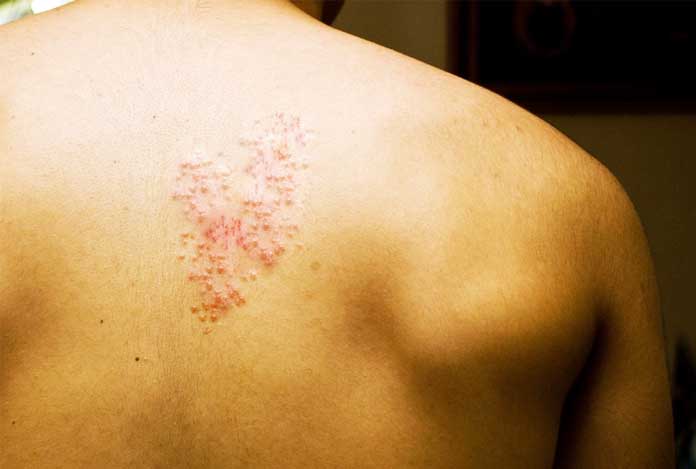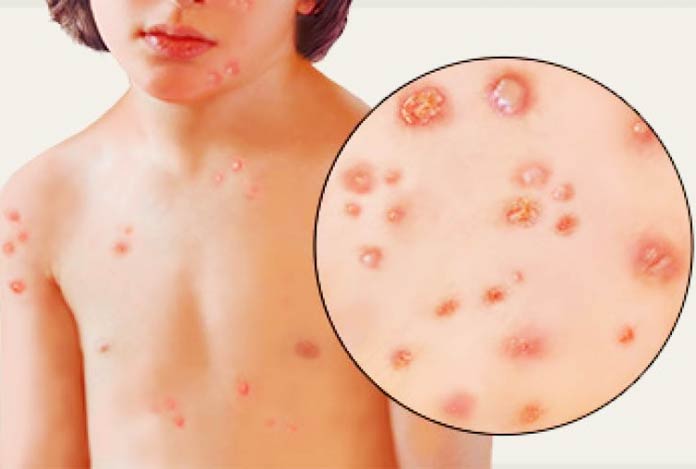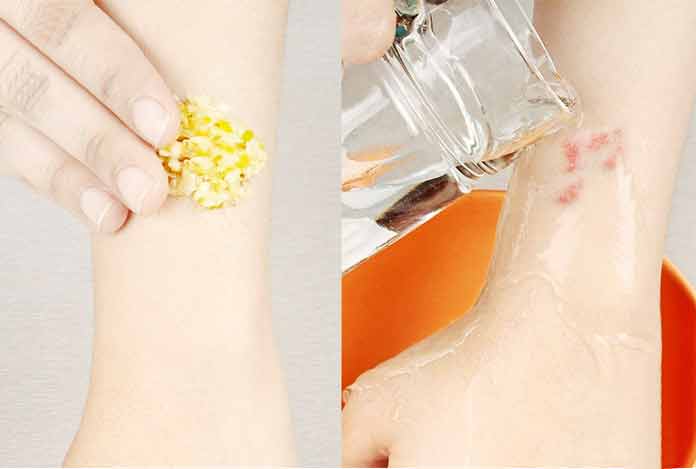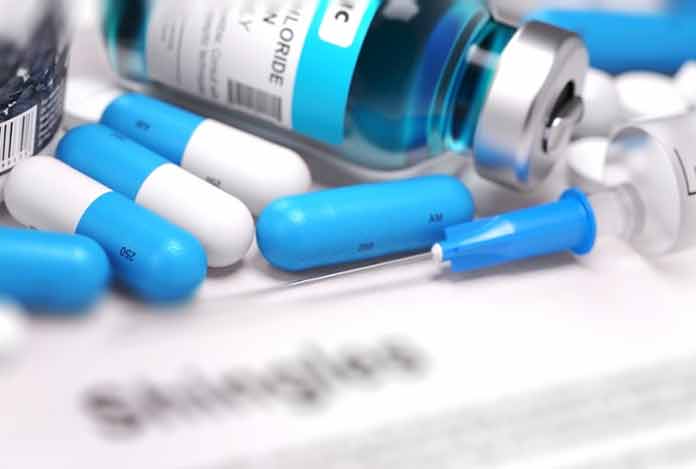
Overview and Statistical Facts
Shingles is a viral infection that causes painful rash. It can occur anywhere on the body. It appears as a single stripe of blisters that covers the left or right side of your torso. It is a condition which is caused by varicella-zoster virus, the same virus which causes chickenpox. Shingles is less contagious. A person suffering from shingles can pass on the varicella zoster virus to any person who is not immune to chickenpox. It spreads through direct contact with the open scores of a person with shingles. The person infected with shingle scores will then develop chicken pox.
If you have had chicken pox, this virus remains in an inactive state in the nerve tissue near the brain and spinal cord. Years later, the virus may again become active causing shingles. Shingles is not a life-threatening infection, but it can be very painful. Vaccines can reduce the risk of developing shingles. Early diagnosis and treatment can reduce the incidence of the infection. Shingles may occur in a person who has had chickenpox. Chickenpox and shingles are related to each other as both are caused by the same virus.
A person with chickenpox has blisters on their body. These blisters can appear anywhere on the back, chest, face and can spread to other parts of the body. Rashes in shingles are very painful. A doctor should be consulted if one-sided line of blisters appears on torso, face or body. The rash forms into a painful, fluid-filled blisters which then burst and create scabs where the blisters were formed. Older adults and people with weak immune system are at a greater risk of developing shingles.
Shingles is associated with normal aging and anything that weakens the immune system like medications, infections increase the risk shingles. It can even occur in children and young adults.
In most cases, shingles do not have any long-term effects but in some people, it can cause complications. The long-term burning pain experienced by some people after healing of the rash is caused by a complication known as post-herpetic neuralgia (PHN). It is a complication of shingles and affects nerve fibers and skin. It may last for weeks, months and sometimes even years. PHN affects quality of life. Older people are more likely to experience the long-lasting nerve pain.
Sometimes, shingles can develop in the eye and can affect the skin of the eyelid. It can cause pain, blurred vision and, sometimes, complete blindness. Shingles can also result in scarring, skin infections, and hearing loss.
It is estimated that 25% of people will have at least one episode of shingles during their life. In October 2017, the U.S. Food and Drug Administration (FDA) approved a new vaccine that prevents shingles. This is the second vaccine that the FDA has approved for prevention of shingles. About one million shingles cases are reported in the U.S. every year and almost one out of three people in the U.S. is likely to develop the disease. Although it can affect anyone, it is more common in people 60 years or older. 95% of adults have had chicken pox and thus are at risk of developing shingles.
Symptoms of Shingles
Symptoms of shingles are:
1. Pain and sensitivity on one side of the body are the first symptoms of shingles. Sensation can be itching, tingling, aching, deep shooting pain. Medical help must be sought immediately if symptoms occur on the face or near the eyes.
2. Fever, chills and headache.
3. Red rash which appears one to three days after the start of the pain. The rash develops with raised red bumps and blisters on the skin. They get filled with pus and scabs are formed in about 10-12 days. In some cases, pain persists without rash or blisters. This occurs only on one side of the body. Rash disappears if the scab comes off in next two or three weeks.
4. In some cases, postherpetic neuralgia develops in which the pain of shingles stays even after the rash has gone. Around 15% of people with shingles develop postherpetic neuralgia, mostly people who are above the age of 50.
5. Fever and weakness are the early symptoms of shingles. It may accompany pain or tingling sensation. Pink or red blotchy patches appear on one side of the body.
In some people, the following symptoms may also appear:
- Fatigue
- Sensitivity to light
Some other complications related to shingles are Herpes zoster oticus or Ramsay Hunt syndrome and Herpes zoster ophthalmicus. Herpes zoster oticus is caused by reactivation of varicella zoster virus in which facial nerves are affected. Herpes zoster ophthalmicus is the reactivation of varicella zoster virus which affects the eyes.

Risk Factors of Shingles
- Age: The risk of shingles increases with age. This may be due to decreased immunity against infections as one gets older.
- Weak Immunity: People with weakened immune systems are at greater risk of having shingles. Immune system may get weakened due to certain type cancers like leukemia and lymphoma and HIV/AIDS.
- Immunosuppressive Medications: People, who take immunosuppressive medications like steroids and other drugs after organ transplantation, are at higher risk of developing shingles.
- Chickenpox: People who have had chickenpox once in their lifetime have more chances of having shingles as the virus that causes chickenpox remains dormant near the brain and spinal cord and it is the same virus that triggers shingles.

Do I have Shingles?
You may confuse shingles with some other conditions that affects the skin. A person with shingles has rash and blisters on the face and body. These may also appear in other conditions of skin like psoriasis, allergies, eczema and hives. The pain that occurs in shingles can be mild or severe.
Psoriasis is an autoimmune disease that is easily confused with shingles. In psoriasis, red patches appear on the skin. However, a rash caused by psoriasis does not go away on its own over a period. Dry, cracked skin that may bleed is also associated with psoriasis. The skin gets more red and scaly with passage of time.
A skin allergy can also cause a rash like shingles. Another similar condition is eczema. It is a skin condition that causes the skin to become inflamed, red, dry and itchy. Shingles, however, involves pain, burning, skin tingling. Also, both shingles and hives produce irritable red rash, but they are very different medical conditions and can often be confused with each other. Blister formation takes place in shingles and not in hives. Further, shingles is caused by varicella zoster virus whereas hives is a skin reaction to things like pets, soaps and medications. Hives can occur multiple times, but shingles occur only once in life.
Causes and Prevention of Shingles
Varicella-zoster virus causes shingles It is not known exactly why the chickenpox virus gets reactivated to cause shingles. Further, other triggers like stress, injury or certain medications cannot cause shingles. However, it can cause your immune system to weaken which can put you at risk for developing shingles.
- Singles can be prevented through following ways:
- Shingles in adults above the age of 60 can be prevented through vaccination.
- Apply cold washcloth on blisters to get relief from pain.
- Cover the rash to avoid the infection spreading to others.
- Avoid touching and scratching of rash. Wash the hands frequently to avoid spreading of shingles.
- Varicella vaccine (VZV) like Zostavax can prevent shingles in older people.
The U.S. Centre for Disease Control and Prevention (CDC) recommends that people above the age of 60 should get at least receive one dose of shingles vaccine. The vaccine is available in pharmacies and clinics. Shingles vaccine should not be received by people who are allergic to some ingredients, have weak immune system or are pregnant.

Diagnosis and Tests of Shingles
Diagnosis of shingles is based on the pain history on one side of the body, along with signs of rash and blisters. The doctor may take a tissue scraping or culture of the blisters for lab examination. Doctors tests for shingles only when the rash appears.
Lab testing may be useful in people with suppressed immune systems and having herpes zoster all over the body.
Polymerase chain reaction may be useful in confirming cases of zoster sine herpete, a condition in which pain occurs without the presence of rash. PCR can be used for detection of VZV DNA. The test samples contain scabs taken from crusted lesions. Viral DNA may be detected in saliva during acute disease.
Biopsy, a procedure which involves extraction of tissue or cells to study, are useful if where the infection has spread to other body parts. Serologic methods help little in lab confirmation of shingles and can be used only in the absence of PCR testing.
A positive IgM Enzyme-Linked Immunosorbent Assay (ELISA) test is an indication of primary VZV infection or re-infection.

Treatment and Care of Shingles
A person with shingles may be advised to take medications for the treatment. It may also help speed up the healing and ease the pain. Antiviral medicines may slow down the progress of rash. This happens only when these antiviral medicines are taken within the first 3 days of the diagnosis of the infection. These may also reduce the chances of having complications. You may be prescribed the following medications for positive results:
- Acyclovir (Zovirax)
- Famciclovir (Famvir)
- Valacyclovir (Valtrex)
If there is severe pain after clearing of rash and an infection during shingles, you may be prescribed the following medications:
- Capsaicin Cream: Make sure it doesn’t get in your eyes
- Numbing Medicine: Lidocaine (Lidoderm, Xylocaine) may be used for pain. It is available in many forms like creams, patches, lotions and powders
- Antibiotics: These are required if bacteria infect skin and cause rashes. Antibiotics will not help if bacteria are not involved.
- Tricyclic Antidepressants: Some of the medications might help ease the pain that stays after the healing of the skin. These medicines involve amitriptyline, desipramine, nortriptyline.
Proper care in shingles provides relief from the symptoms. This can be achieved through following ways:
- Avoid scratching the skin where rash is located
- Apply cool tap-water compresses to blisters
- Keep the infected area clean with soap and water

OTC or Self-Management Methods for Shingles
Shingles causes pain and inflammation. Over-the-counter medicines can provide relief from milder symptoms. These medicines are:
- Acetaminophen
- Ibuprofen
- Naproxen
These medicines may also prevent postherpetic neuralgia, a condition in which a person experiences a burning sensation after the shingle blisters and rashes have gone away.
A person with shingles can get relief from the symptoms though following self-management ways:
- Oatmeal Baths: Take a bath in a cool tub of water. Add colloidal oatmeal which is made of oats grounded very finely into powder form. This may help soothe your itching.
- Cold Compresses: Place washcloth washed with cold water on blisters for 20 minutes. It relieves itching and keeps blisters clean. Skin infection can also be avoided in this way. Don’t use compresses if blisters don’t ooze or if you are using creams or patches on your rash.
- Loose Clothing: Avoid bandages that will stick to your rash. You will also find that natural fibers like cotton and linen will give you more comfort.
- Calamine Lotion: Soothe your skin with cool calamine lotion. It contains zinc oxide and iron oxide that is used in the treatment of skin ailments.

Natural Ways to Cure Shingles
Shingles can be cured through following ways:
- Baking Soda and Corn Starch Paste: Make a paste using baking soda or cornstarch and water. This paste is effective in itching caused by shingles rash. Add two parts baking soda or cornstarch and one part water to create the paste. You can then apply the paste to your rash and rinse it out after 10-15 minutes.
- Lotions and Creams: If the paste of baking soda and cornstarch don’t work, use soothing lotions and creams to control itching. Lotions and creams don’t speed up the healing process but increase level of comfort. You can also apply ointments containing capsaicin which eases pain as it has anti-inflammatory effect.
- Dietary Habits: Foods rich in vitamin A, C, B 12, E can have positive results in shingles. Foods that can be consumed are orangs and other yellow fruits, green leafy vegetables, dairy products, whole granaturalins, beans and legumes. Foods containing amino acid like lysine also helps in shingles.
- Homeopathic and Herbal Medicines: Some supplements and herbal medicines are effective in fighting the shingles virus and can help in the treatment of anxiety and insomnia due to shingles. These supplements and herbal medicines include St. John’s Wort, oregano oil, green tea, essential fatty acids, lemon balm, melatonin, etc.

Health Tip by Experts
If someone develops pain or rash in one side of the body, they must look out for medical care as soon as possible as antiviral medications are effective only if these are given early that is within one to three days of the development of the rash.




